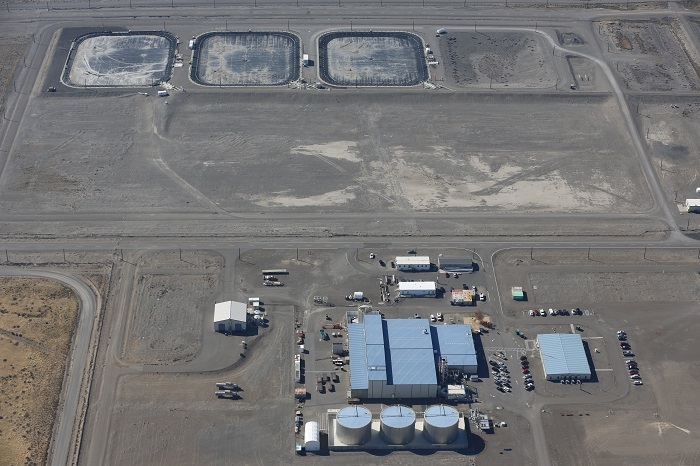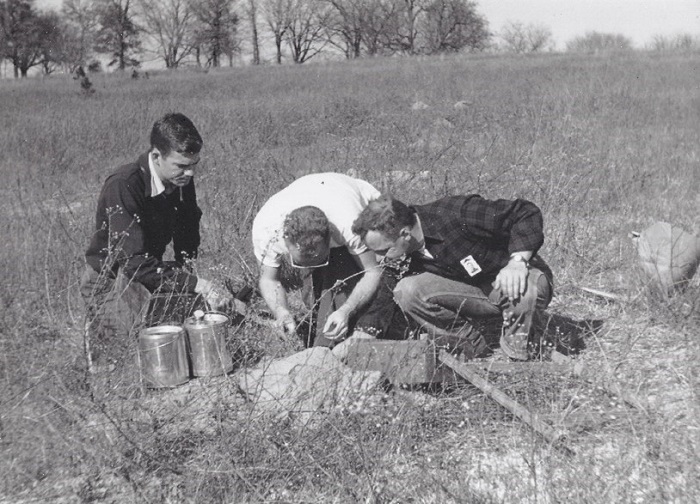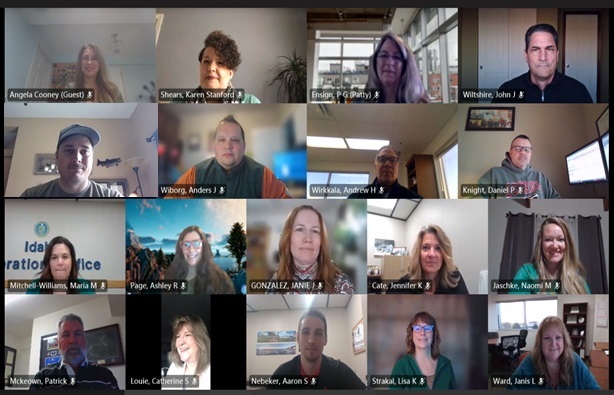 EM Office of River Protection tank operations contractor Washington River Protection Solutions recently awarded three subcontracts for construction projects to support tank waste treatment at the Hanford Site. Two of the subcontracts are for upgrades at the Effluent Treatment Facility, which treats wastewater from Hanford cleanup projects.
RICHLAND, Wash. – Washington River Protection Solutions (WRPS), the EM Office of River Protection (ORP) tank operations contractor at the Hanford Site, has awarded three subcontracts worth nearly $19 million to a local company for construction projects to support tank waste treatment.
WRPS awarded the subcontracts to Fowler General Construction Inc., a company based in Richland, Washington. Two subcontracts totaling $13.5 million are for projects at Hanford’s Effluent Treatment Facility (ETF), which stores and treats wastewater generated by numerous Hanford remediation activities. A third subcontract worth $5.3 million is to construct a 17,600-square-foot office building at Hanford’s 222-S Laboratory. The laboratory provides analytical support for continued safe storage of tank waste and the waste treatment mission.
“Upgrades to these facilities will help ensure critical infrastructure is in place to treat tank waste through the Direct-Feed Low-Activity Waste Program at Hanford’s Waste Treatment and Immobilization Plant (WTP),” said Delmar Noyes, manager of the ORP tank farms project division.
One of the ETF subcontracts is to design and build a system to remove a hazardous chemical, acetonitrile, from the liquid waste stream generated at the WTP during the process to vitrify, or immobilize in glass, tank waste.
The second subcontract is to expand the ETF’s existing load-in station and to construct a backup load-in station for waste tanker trucks. While most of the wastewater sent to the facility is pumped via underground piping, a smaller amount is delivered by tanker truck.
“During tank waste treatment operations, about 1.2 million gallons of liquid waste per year is expected to be trucked from Hanford’s Integrated Disposal Facility to the ETF for processing,” said Brandon McFerran, WRPS manager for the ETF.
The Integrated Disposal Facility will provide a permanent, environmentally safe disposition site for immobilized low-activity waste containers from WTP. Water from precipitation and dust suppression will be collected and sent to ETF for treatment as well.
-Contributor: Peter Bengtson
 Savannah River Ecology Laboratory’s first graduate students collect samples at the former Savannah River Plant, now called the Savannah River Site.
AIKEN, S.C. – The University of Georgia’s (UGA) Savannah River Ecology Laboratory (SREL), located on the Savannah River Site (SRS), recently celebrated the 70th anniversary of its creation.
On June 23, 1951, UGA zoology professor Eugene Odum and his graduate students began the Laboratory of Radiation Ecology, now named SREL, at SRS.
The Atomic Energy Commission (AEC), predecessor to DOE, had tasked Odum with conducting ecological surveys of the plants and animals at what was then known as the Savannah River Plant. That research would later serve as a baseline for comparative study to assess if the operations at the plant were altering the natural environment surrounding the facility.
Odum, known as the “father of modern ecology,” investigated how radioactive elements would travel through ecosystems and alter plants, animals, land, and aquatic systems. For over 70 years, SREL has continued his work and serves as the independent assessor conducting ecological research at SRS. SREL’s areas of research expertise now include wildlife ecology, disease ecology, biogeochemistry, and forestry and conservation. The lab also provides guidance and strategies for remediation methodologies and informs the public through outreach and education.
Lab employees have published over 3,000 articles in peer-reviewed journals and created research partnerships around the world, including performing research in Chernobyl and Fukushima. Additionally, Odum’s work with students began a program that has produced more than 500 graduate students to date.
“As issues emerge, SREL will continue to adjust to address environmental concerns that impact our world,” said Olin “Gene” Rhodes, Jr., director of SREL. “With over 70 continuous years of research, SREL is in a unique position to provide research to help protect the ecology at SRS.”
-Contributor: Lindsey MonBarren, Vicky Sutton-Jackson
 |
Participants from across the DOE complex participated in a virtual process improvement kaizen, hosted by a team from EM contractor Hanford Mission Integration Solutions. Virtual kaizens have shown to be highly effective and provide the ability to include participants from outside local geographical areas.
RICHLAND, Wash. – The COVID-19 pandemic fast-forwarded the adoption and adaptation of the digital workplace and like at many EM sites, numerous work groups at the Hanford Site have mastered that shift.
The operating excellence team with EM’s Richland Operations Office (RL) contractor Hanford Mission Integration Solutions (HMIS) is one example of successfully shifting to virtual platforms.
The team demonstrated innovation to enable effective structured improvement activities (SIAs) during telework, social distancing, and other COVID-19 controls. Lean Six Sigma Program Manager Tracy Desmond said her team transformed SIAs, such as strategy workshops and kaizens, to virtual settings using a communications platform.
“Transitioning to virtual activities has been an amazing learning experience for our team and provides a new dimension of facilitation that has been surprisingly effective,” Desmond said.
Kaizen is a Japanese term meaning “change for the better” or “continuous improvement.” HMIS recently conducted an activity for such a change to the DOE task order process. The activity included team members from across the EM complex, spanning from its headquarters in the Washington, D.C. area to Hanford in Richland, Washington.
The four-day virtual kaizen focused on developing an integrated task order process to expedite the development, approval, and implementation of indefinite delivery/indefinite quantity (IDIQ) task orders.
Task orders are adaptable contract types that give a government agency flexibility to agree to a contract when the exact requirements or needs are not known. The IDIQ contracting model required a new task order process to develop firm fixed price, cost reimbursement, and performance work statements. The workshop resulted in a common understanding of process expectations, roles, responsibilities, and resource gaps.
“The virtual kaizen techniques applied demonstrated that this platform can be effectively used complex wide, without incurring travel time and cost,” said Cathy Louie, RL portfolio analysis program lead. “The facilitation team was highly professional in preparation during the virtual workshop delivery and at the out-brief.”
-Contributor: Jill Harvill
|